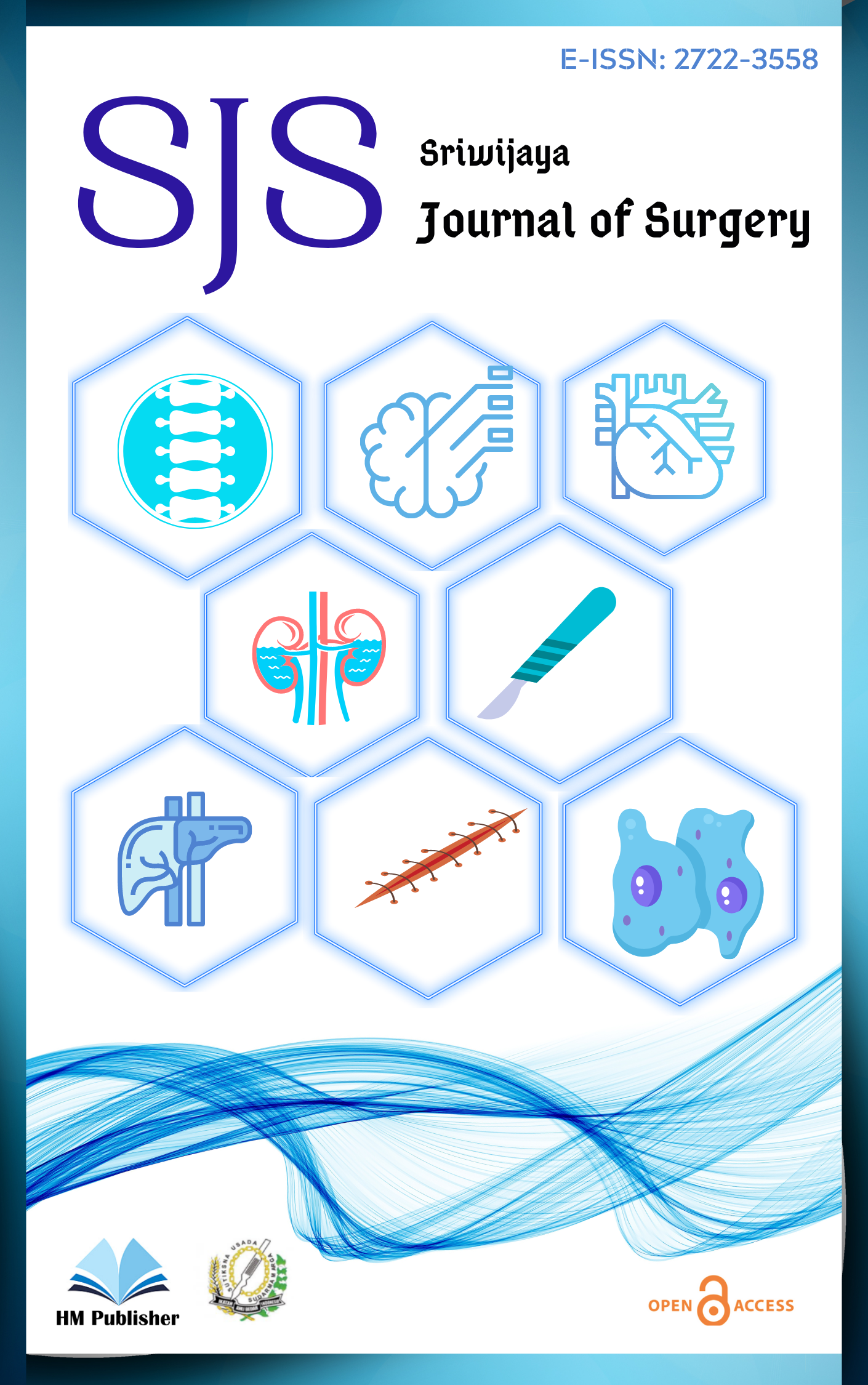Main Article Content
Abstract
Introduction: Traumatic brain injury (TBI) is a primary cause of global death and disability, where early and accurate prognostication is critical but remains a clinical challenge. Serum lactate is emerging as a biomarker of the complex neurometabolic derangement following TBI, extending beyond its traditional role as a marker of hypoxia. This study aimed to determine if serum lactate is an independent predictor of outcomes in TBI patients.
Methods: We conducted a prospective, single-center observational study of 33 TBI patients at Dr. Mohammad Hoesin General Hospital. Serial venous serum lactate levels were measured at admission, 24, and 48 hours. The primary outcome was unfavorable functional status (Glasgow Outcome Scale [GOS] 1-3) at hospital discharge. Multivariate logistic regression was used to assess lactate as an independent predictor of unfavorable outcome, controlling for age and initial Glasgow Coma Scale (GCS) score. Survival was analyzed using Kaplan-Meier curves and a Cox proportional hazards model.
Results: The cohort (N=33) was predominantly male (63.6%) with a mean age of 37.91 years. Higher admission lactate was strongly associated with worse GOS categories (p=0.002). After adjusting for age and initial GCS score, admission serum lactate remained a significant independent predictor of unfavorable outcome at discharge. For every 1 mmol/L increase in lactate, the odds of an unfavorable outcome increased by over twofold (Adjusted Odds Ratio: 2.15; 95% CI: 1.12-4.13; p=0.021). Similarly, lactate was an independent predictor of in-hospital mortality in the Cox proportional hazards model (Adjusted Hazard Ratio: 1.78; 95% CI: 1.05-3.01; p=0.032).
Conclusion: Elevated admission serum lactate is a strong, independent predictor of unfavorable in-hospital functional outcome and mortality in TBI patients. As a readily available biomarker, it reflects the severity of the underlying neurometabolic crisis and provides crucial prognostic information beyond initial clinical and demographic assessments, aiding in early risk stratification.
Keywords
Article Details
1. Authors retain copyright and grant the journal right of first publication with the work simultaneously licensed under a Creative Commons Attribution License that allows others to share the work with an acknowledgement of the work's authorship and initial publication in this journal.
2.Authors are able to enter into separate, additional contractual arrangements for the non-exclusive distribution of the journal's published version of the work (e.g., post it to an institutional repository or publish it in a book), with an acknowledgement of its initial publication in this journal.
3.Authors are permitted and encouraged to post their work online (e.g., in institutional repositories or on their website) prior to and during the submission process, as it can lead to productive exchanges, as well as earlier and greater citation of published work.

